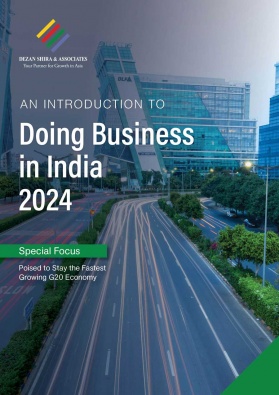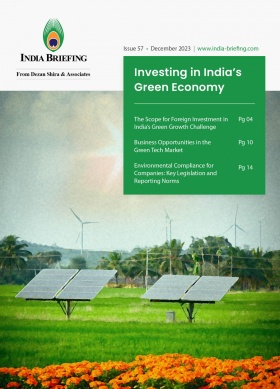Interim Budget Rounds Up Key Tax Reforms, Makes Case for Modi Re-Election
In a marked departure from 2019, finance minister Nirmala Sitharaman’s 2024 interim budget contained no surprises for the tax payer. We list key announcements in the tax realm under this budget, which was mostly a recount of the government’s achievements over the last two terms, thereby making the case for a third.
On Thursday, February 1, 2024, India’s Finance Minister Nirmala Sitharaman delivered her sixth consecutive financial budget to the Indian Parliament, one that was void of any tax relief or significant tax adjustments. The finance minister affirmed that direct and indirect tax rates, including import duties, would remain the same. Further, no relief measures or tax policies were announced targeting the middle class. Despite the government’s indications that the budget would not introduce big-bang measures, the decision to retain the tax structure could upset industry stakeholders and manufacturers who were still expectant of some relief ahead of elections.
India’s general elections are scheduled to take place April-May, and a comprehensive union budget will be tabled in the Lok Sabha (lower house of parliament) later this year, at the beginning of the monsoon session of the Parliament, likely in July.
India’s tax regime: Direct and indirect taxes
In India, direct taxes are imposed on an individual’s earnings or profits. Such taxes are collected by the government or an authorized agency in the form of income tax, fringe benefit tax (FBT), and personal property tax. The tax burden cannot be transferred to another person; it must be assumed by the person upon whom the tax is imposed. The Central Board of Direct Taxes (CBDT) is in charge of overseeing and managing direct tax.
On the other hand, the government imposes an indirect tax on goods and services, and it is transferable from one taxpayer to another. Most indirect taxes are absorbed by end customers. These taxes are managed and administered by the Central Board of Indirect Taxes and Customs (CBIC).
|
Direct taxes |
Income Tax; Corporate Tax; Capital Gains Tax; Securities Transaction Tax (STT); Dividend Distribution Tax (DDT); Gift Tax and Estate Tax |
|
Indirect taxes |
Service Tax; Excise Duty, Customs Duty; Sales Tax; Value Added Tax and Goods and Services Tax (GST) |
|
Other taxes |
Entertainment Tax; Property Tax; Road Tax; Education Cess and Toll Tax |
Relief announced for old tax disputes but need for clarification
One of the highlights of the interim budget was the proposal put forth by the finance minister to withdraw outstanding tax demands for relatively petty amounts, applicable for specific time periods. She stated in her interim budget speech that outstanding tax demands up to INR 25,000 for fiscal years up to FY2010 and up to INR 10,000 for FY 2010–11 to 2014–15 will be dropped.
In 2020, a dispute resolution scheme named “Vivad Se Vishwas” had been introduced by the government to handle tax dispute cases, allowing taxpayers to settle by paying only the disputed tax amount. In the recent budget statement, Sitharaman defended waiving unpaid tax demands for specific time periods and amounts, citing the goal of improving taxpayer services.
There are a large number of petty, non-verified, non-reconciled, or disputed direct tax demands, many of them dating as far back as the year 1962, which continue to remain on the books, causing anxiety to honest tax payers and hindering refunds of subsequent years.
Further clarification is needed regarding the beneficiaries of the announcement. Although relief will be granted to small taxpayers with outstanding amounts, it is uncertain whether individuals whose outstanding demands were offset against returns will receive relief. Additionally, it is unclear if interest accumulated on the demand would be taken into account when calculating the declared tax demand limit of INR 10,000/INR 25,000 (approx. US$134.64/US$336.61). The Income Tax Department has the authority, under Section 245 of the IT Act, to adjust any tax claim from a previous year with the refund from the current year.
Extension of some tax incentives
The interim budget announced the extension of some of the tax benefits for startups and investments from sovereign wealth funds/pension funds to March 31, 2025, thereby ensuring continuity in taxation policies. Further, tax exemptions for certain International Financial Services Center (IFSC) units that were due to expire on March 31, 2024, have also been extended to March 31, 2025.
Budget round up of recent tax relief policies under the Modi government
Old tax regime versus new tax regime
No major announcements were made by the finance minister on the personal tax slabs. Instead, Sitharaman reiterated that there is no tax liability for taxpayers reporting income not exceeding INR 700,000 (approx. US$9,422) due to the hike in rebate under Section 87A. Accordingly, people will compute the income tax due on their earnings in the same manner as they are doing so for the ongoing fiscal year (April 1, 2023–March 31, 2024).
In 2014, the former finance minister Arun Jaitley (in Prime Minister Narendra Modi’s government) had increased the personal income tax exemption limit from INR 200,000 (approx. US$2,687) to INR 250,000 (US$3,359). The exemption threshold for older citizens was raised to INR 300,000 (approx. US$4,031) from INR 250,000 (approx. US$3,359).
In 2019, prior to the 16th Lok Sabha elections, finance minister Nirmala Sitharaman surprised many by increasing the income tax exemption limit from INR 250,000 (approx. US$3,359) to INR 500,000 (approx. US$6,719).
In 2020, the new tax regime was announced. In an effort to get more takers, Budget 2023 saw Sitharaman make the new tax regime the default tax regime besides making changes to the tax slabs. The finance minister also raised the tax exemption limit to up to INR 700,000 (approx. US$10,078) – applicable to the new tax regime. This regime would now have five slabs and standard deduction was introduced for salaried, pensioners, and family pensioners. There would also be marginal tax relief for small taxpayers whose incomes exceeded INR 700,000.
However, the much more popular old tax regime continues to exist – under which individuals continue to avail over 70 exclusions and deductions.
According to India’s income tax laws, an individual (not having a business income) must annually select either the new or old tax regimes. For more information, read our coverage of the personal tax regime in India here: Old vs New Tax Regime in India: How to Choose the Right Tax Option
Presumptive tax
The central government first introduced the presumptive tax in FY 2017-18, with a vision to give a boost to micro-enterprises in the country. The concept exempts small companies and independent professions from book-keeping. Instead, a specific portion of the taxpayer’s complete revenue must be calculated and taxed.
In Budget 2023, the threshold for presumptive taxation for retail businesses, covered under section 44AD of the Income-tax Act, 1961, was raised from INR 20 million (approx. US$268,700) to INR 30 million (approx. US$403,050). Similarly, the threshold for professionals eligible for presumptive taxation, such as doctors, lawyers, engineers, etc., was increased from INR 5 million (approx. US$67,190) to INR 7.5 million (approx. US$100,785) under section 44ADA.
Corporate tax
In September 2019, the government had lowered the corporate tax rate for established domestic enterprises from 30 percent to 22 percent and further reduced it to 15 percent for new manufacturing companies that commenced operations within a specified time period. Besides extending the concessional tax rate applicable to new manufacturing companies to March 31, 2024, in Budget 2023, no new announcements have been made. This move has left many manufacturers unhappy.
Further, according to section 115BAB of the Income-tax Act, 1961, only selected companies are eligible to avail this concessional tax rate of 15 percent. New companies that had set up and registered on or after October 1, 2019, and commenced manufacturing or production of an article or thing on or before March 31, 2024, can avail the taxation benefit. Section 115BAB also specifies that only businesses not formed by splitting up or re-establishment of a business already in existence and which does not use any machinery or plant previously used for any purpose – will be covered for the tax concession. Various other conditions are attached to the enjoyment of this particular tax concession.
Indian manufacturers have expressed concern over this, stating that not only will this limit manufacturers’ capacity to increase product size, but it may also deter investment opportunities for companies not covered under section 115 BAB of the Income-tax Act. Corporates are now anticipating an announcement regarding a deadline extension in the post-election full budget by the newly elected government.
Surcharge rate
Previously, finance minister Nirmala Sitharaman had announced in Union Budget 2023 that the highest surcharge rate for individual income tax would be reduced to 25 percent from 37 percent in the new tax regime from FY 2023-24. It is important to note that a health and education cess at the rate of 4 percent is added to the income tax liability of individuals, along with the surcharge, in every instance.
Following from Budget 2022 proposals, the highest surcharge rate on the tax payable for long-term capital gains (LTCG) is 15 percent for Assessment Year 2023-24. This is also the case for Association of Persons (AoP) entities, where all the members are companies, and for whom the maximum surcharge rate applicable is 15 percent if the total income during the financial year exceeds INR 20 million.
Also, the maximum rate of surcharge on tax payable on dividend income or capital gains referred to in Section 111A, Section 112, or Section 112A, shall be 15 percent in AY 2023-24 (see Income Tax Department link here).
Other announcements
Sitharaman said that direct tax collections had more than trebled in the last decade; and the number of tax return filers increased by up to 2.4 times. This was attributed to the introduction of updated income tax returns, a new Form 26AS, and prefilling of tax returns, which cumulatively made the process easier and more straightforward.
The finance minister noted that the average processing time for returns had significantly reduced from 93 days in FY2014 to just 10 days in the current financial year, thereby expediting the refund process.
The latest goods and services tax (GST) figures revealed that average monthly gross GST collections doubled to INR 1.66 trillion (approx. US$223.38 billion) in FY2024.
A self-declared report card
The interim budget, which is a vote on account, essentially saw the finance minister present a white paper of the government’s achievements over the last decade. No major handouts were announced, and several sectors may be disappointed over the absence of targeted tax and fiscal relief measures.
Yet, economists have lauded the government’s focus on fiscal conservatism, despite the looming election, which impacts corporates’ forecasted bottom lines and the cost of borrowing. Sitharaman aims to cut the budget deficit to 5.8 percent this fiscal, and further bring it down to 5.1 percent in FY 2025.
On its part, the Modi government appears confident of returning to power in the summer after recent electoral wins in state elections to Rajasthan, Chhattisgarh, and Madhya Pradesh, and potentially discussing more concrete plans for a roadmap to a Viksit Bharat (Developed India).
With inputs from Melissa Cyrill and Divyansh Srivastava.
(US$1=INR 82.91)
About Us
India Briefing is produced by Dezan Shira & Associates. The firm assists foreign investors throughout Asia from offices across the world, including in Delhi and Mumbai. Readers may write to india@dezshira.com for more support on doing business in India.
We also maintain offices or have alliance partners assisting foreign investors in Indonesia, Singapore, Vietnam, Philippines, Malaysia, Thailand, Bangladesh, Italy, Germany, and the United States.
- Previous Article India’s Interim Budget 2024: No Populist Measures, No Changes to Taxation
- Next Article EV Sector in India: Production Capacity, Government Targets, and Market Performance








